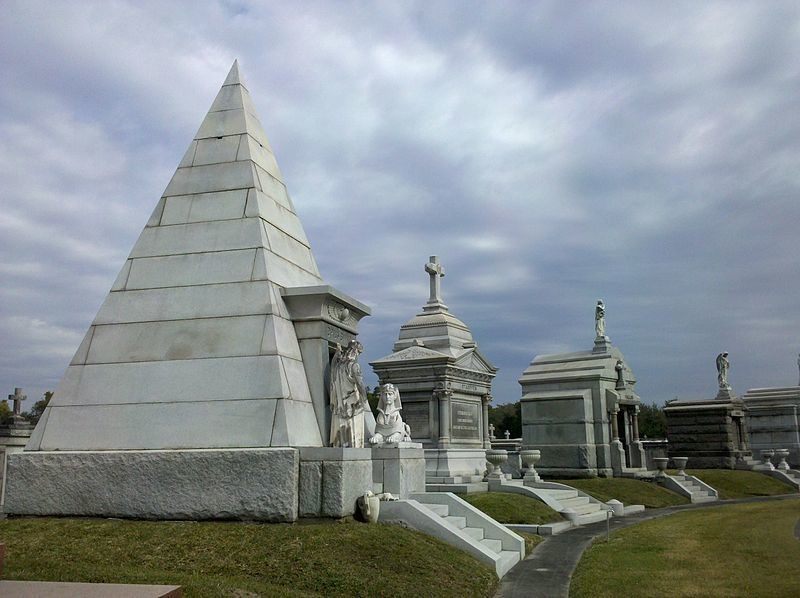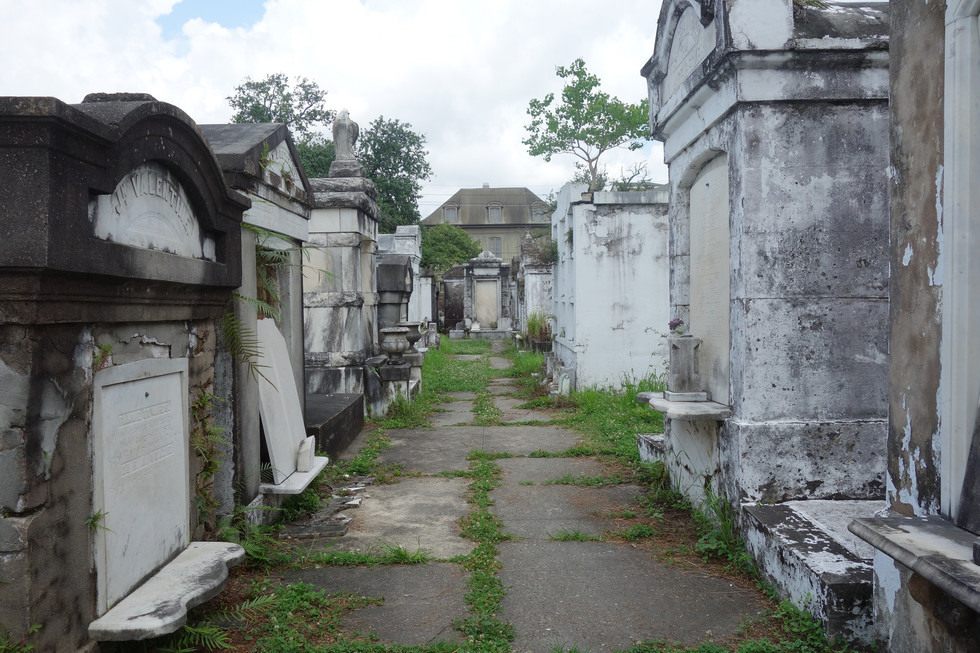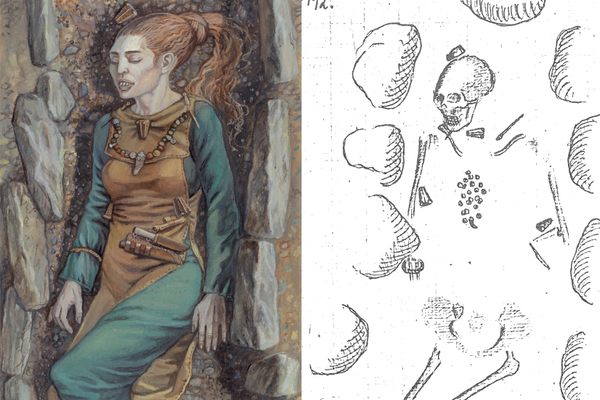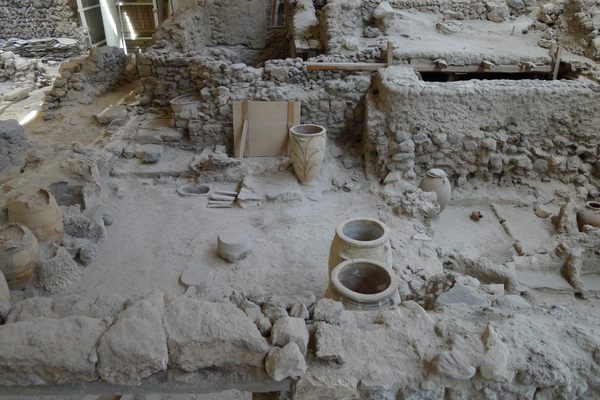Tumblr’s #Boneghazi Meme And the True History of Robbing Louisiana Graves

A (thankfully) dry day at Holt Cemetery, a rare New Orleans below-ground burial site. (Photo: Mark Gsothl/Flickr)
Last week, a user in a private Facebook group for witches advertised some rare wares—human remains they had found in a nearby cemetery. The spot was “where I go to find my human bones for curse work and general spells that require bone,” the user, who was based in New Orleans, explained. The community member was offering to ship them at cost to people with similar needs. “I know human bones aren’t easy to come by and I usually have left overs,” the user wrote.
When the conversation was posted to Tumblr, it blew the place up. Some were concerned about the legality of selling human remains; others, the morality. Some worried for the safety of the original poster, who quickly became a target for everything from run-of-the-mill online callouts to legal threats to aggressive doxxing (in addition, of course, to a whole slew of memes). Users disappeared, reappeared under new names to defend themselves, and then disappeared again, like zombie-ghost hybrids. (Most of the relevant posts were screenshotted for posterity in this exhaustive walkthrough from Digg.)
Meanwhile, spectators who do not frequent the more macabre corners of Tumblr were surprised to learn that any of this was even possible. Why are bones ending up on the surface of the earth? And why do people want them?

The ornate crypts of New Orleans’s Metairie Cemetery. (Photo: Atlas Obscura/Public Domain)
It turns out that the witches aren’t the only ones with access to bones in the bayou. “You can’t really bury people below ground in New Orleans,” says writer, former Atlas Obscura staffer and cemetery tour leader Allison Meier, “They’ll be back.” Due to the city’s notoriously high water table, most of New Orleans’s dead are now buried in secure structures above ground. The thought of all these bones sleeping on the same level as the living has given the city a spooky reputation–one part of town, the famous City of the Dead, features a whole block’s worth of mausoleums, and Metairie Cemetery is studded with sculptures and marble pyramids.
This wasn’t always the case, though: settlers originally buried their dead along the banks of the Mississippi, where the river had built up tall soil deposits over the years. “During the frequent floods… the bodies of the dead would wash out of their muddy graves and come floating through the streets of town,” writes Troy Taylor in Haunted New Orleans: History & Hauntings of the Crescent City. Citizens tried weighting coffins down with stones or boring holes in them, also to no avail–the coffins, too, would pop out of the ground. (These scenes were eerily reprised en masse in 2006, when Hurricane Katrina tore thousands of their bodies from their resting places, regardless of altitude). Those cemeteries that did offer underground real estate, up on hills and on the edges out of town, filled up rapidly, until only the wealthiest could afford plots.
This was an unsustainable system, and eventually, below-ground graves were largely abandoned in favor of sturdier structures–ornate crypts, or smaller, economy-style vaults stacked on top of each other. Such vaults are often crowded, with several family members inside each–a local ordinance allows for new bodies to join vaults every two years.

An alleyway in the City of the Dead, aka Lafayette Cemetery. (Photo: Allison Meier/Atlas Obscura)
But just re-opening one of these vaults can run you upwards of $150, not to mention the cost of the real estate itself. Those in New Orleans who can’t afford these precautions are left to the whims of the water–and of whoever finds them when they wash up.
“The older the grave the more you find” in this “poor man’s graveyard,” the original Tumblr poster wrote. “You can literally walk around and see femurs, teeth, jaws, skull caps, etc.” (In a later post, they said that they had found the bones in question after “an old man digging with a shovel and a backhoe” unearthed them, and they tumbled onto the street. “I went through the grave yard and picked up ones I saw on my path knowing they were either going to be crushed or swept away,” they wrote.)
The maelstrom surrounding this post can be partly attributed to how it takes the idea of the stereotypical Tumblr user to its (semi-)logical extreme–how posting skeleton war gifs and swapping spells can lead quickly down a rabbit hole to grave robbing. But skeleton-snatching isn’t solely the purview of online teens, says Bess Lovejoy, author of Rest in Pieces. “My first thought is that it’s totally illegal and totally unethical, but also not at all unusual from a historical perspective,” notes Lovejoy.
today’s big news twitter: martin shkreli facebook: star wars tumblr: Calling Out A Witch For Actually Stealing Human Bones From A Cemetery
— leon (@leyawn) December 18, 2015
Also, death used to be a lot closer to life. In many cultures, she says, bones are “spiritual walkie-talkies–you can communicate to God through the bones, and he communicates back to you.” Early Catholicism held that every altar needed at least one holy relic, usually a bone of a saint, which led to raids on catacombs throughout the ancient world. Families used to keep their loved ones’ bones close, and famous remains still occasionally end up on display.”It’s only been within the last 100 years that people have gotten skittish about the idea of interacting with human remains,” says Lovejoy. But many of those who aren’t skittish about the “grave” part are not so enthusiastic about the “robbing” part. The best (and really the only) thing to do if you find a bone, says Meier, is to call the police. “There’s no guarantee that a bone that you have in the cemetery is from the cemetery,” she says.
If you’re tempted to keep it, Lovejoy says, the safest thing is to instead go to an antique dealer (who probably got them from an old medical school, where they were used to teach anatomy, or Freemason’s lodge, where they were used to scare newcomers). Even these, though, likely didn’t leave the ground willingly. “There was so much grave robbing and body snatching that the medical schools were doing” in earlier centuries, says Lovejoy, “even the oldest skeletons around probably weren’t put in the ground by somebody who left [bone donation] in their wishes.”
“As far as I’m concerned, we should respect the wishes of the dead, because we hope that our wishes will be respected,” says Lovejoy. And odds are no one, living or dead, wants to become a Tumblr meme.











Follow us on Twitter to get the latest on the world's hidden wonders.
Like us on Facebook to get the latest on the world's hidden wonders.
Follow us on Twitter Like us on Facebook